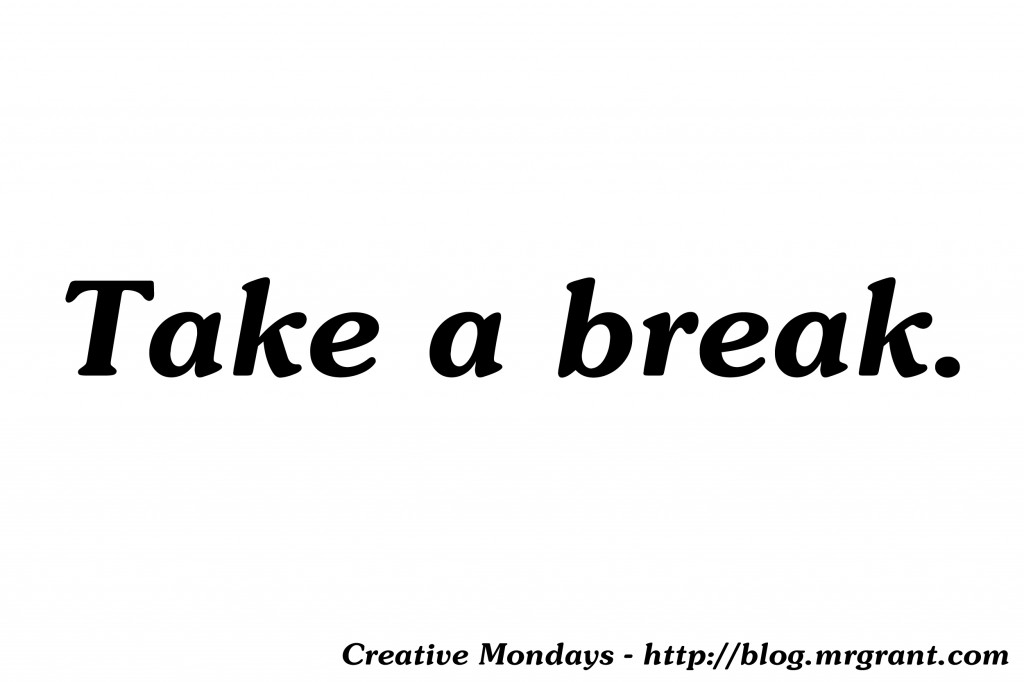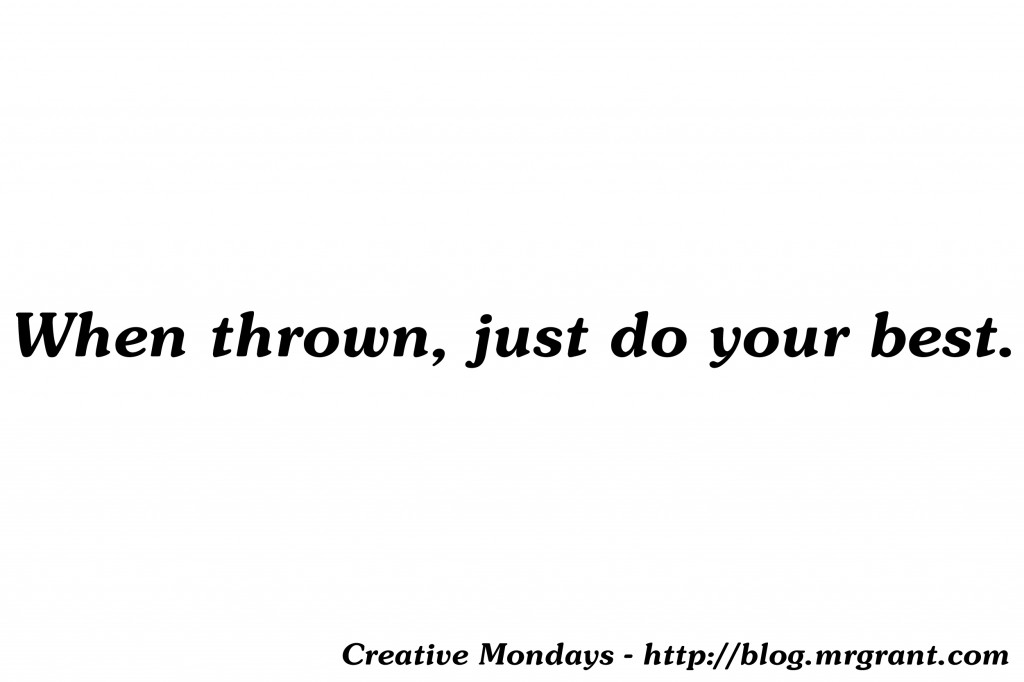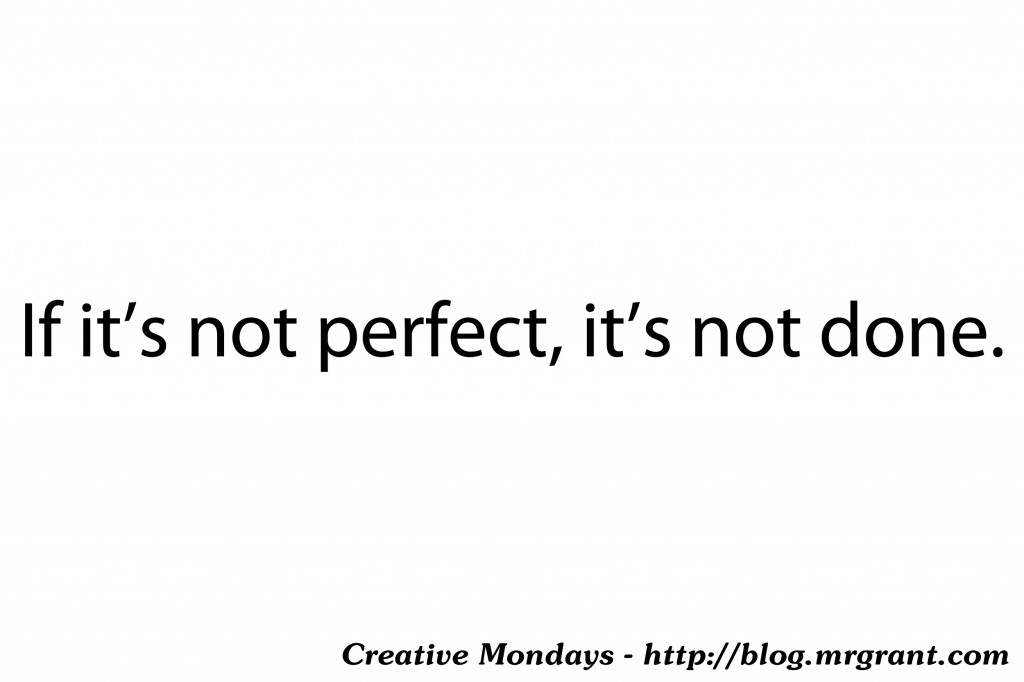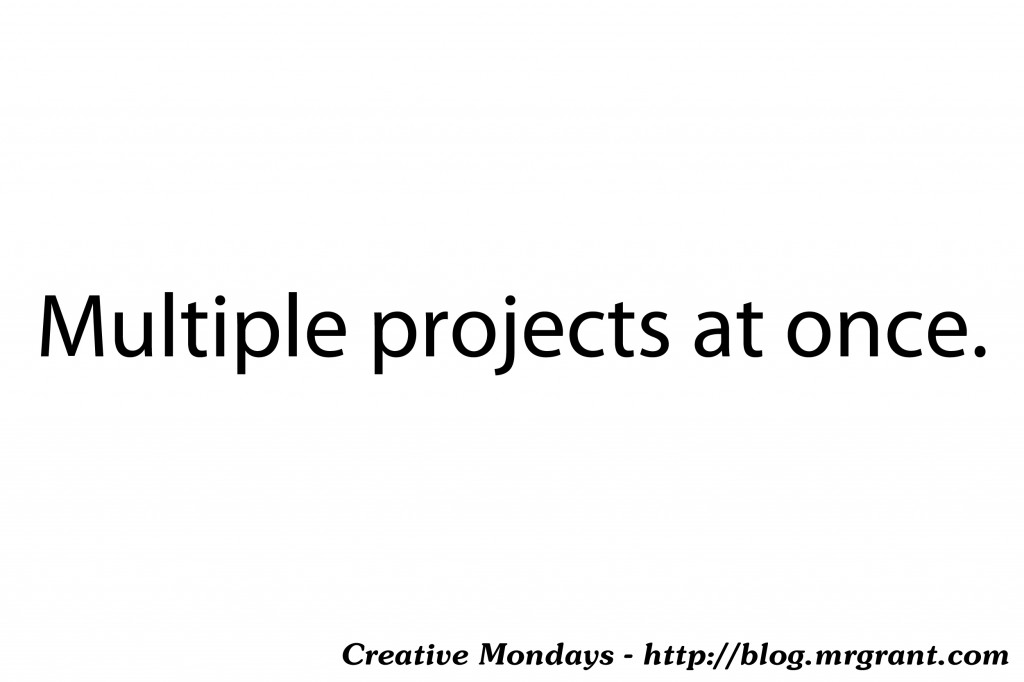Tag: artists
Creative Mondays #039 – Take a break.

Even though we all love creating, there are times when we can get burnt out. When this happens take a break. Nothing will recharge your batteries faster than taking a little time off.
You need to be careful though, you don’t want to take a break, get so busy with ‘real life’ responsibilities that you never return to your art. But taking a few days away from your current project with a set date to return is not a bad idea to help with burnout.
Another thing I like to do to help avoid burnout is have a couple projects going at once. I have a couple different longer stories that I’m working on and I will work on one for a few weeks, then take a break and work on another for a few weeks, and then come back to the first one. I find that this helps keep the stories fresh. Also I find that spending time away from a certain project will give me time to generate new ideas that I can bring with me when I return to it.
I’m not speaking of taking a break when real life intervenes. Unfortunately, that happens a lot more than we would probably like. What I’m talking about here is actually setting aside a periods where you say, “I’m bonn stop working on this for a bit and then come back to it.” You make a conscience choice to take a break.
Taking a break may tell you a little about your project as well. If you take a break from what you’re working on and find you don’t have a real desire to return to it, that may mean that the project isn’t speaking to your true creative self. Don’t spend your time working on a project that isn’t 100% what you want to be working on. That’s not saying scrap a project completely if you find you don’t want to go back to it after taking a break. Just set focus your energy on projects you do want to work on. The unfinished project may actually come in useful.
A year or so ago, I was approached by a producer to come up with some scripts for short interstitials that would, hopefully, wind up on television. I got really excited about the project and wrote out ten scripts over the course of two days. They were short scripts, about a minute long each, so it wasn’t like some big Herculean effort or anything. I was excited about the possibilities this project presented. Then, though, the producer got really busy with other projects and so this one fell by the wayside, as did my passion to create for it. I really liked writing the scripts in this style but I stopped because I knew the project wasn’t going to continue, at least nit then.
A few months later, I got the idea for the Uncle Interloper Pieces and Bits segments. As I was writing out the scripts for them, I realized that a lot of the scripts I had written for the other project would work perfectly for this one. Boom! I suddenly had 10 more scripts to add to the few I had completed already. Sure, they needed some tweaking to find this project, but all that work before was now coming in handy. So, if you take a break from a project, don’t trash it! You may be able to cannibalize it for something else.
People say things work in cycles. I think this can be applied to creative people as well, especially those who, like me, practice in several disciplines. It has been a good year or two since I’ve really sat down and tried to write a comedy music song for my act Throwing Toasters. In the meantime, I’ve been busy with puppet fun, improv and other pursuits. But I can feel the urge to write songs again bubbling in the back of my brain. I’ve been jotting down song ideas left and right. Soon, after taking a bit of a break from comedy songwriting, it’ll be time to pick up the guitar again and get going. When you are truly creative, your brain won’t let you take a break for too long!
We’ve spoken on here before about how creative work is hard work. Just like any nine to five job, you’ll need to take a break every now and then. Do it. Use it to recharge your batteries, invigorate your creative mind and return to your creating with a renewed passion!
—
Do you take breaks in your creative work? Do you fin them helpful in inspiring you to create more? Let us know in the comments below. Have a great week!
Creative Mondays #038 – When thrown, just do your best.

Today’s Creative Monday’s post will not be for every artist but it was something I was thinking about today, so I figured I’d write about it. This is more advice for those creative types that go on a lot of auditions or perform live, but it could have an application for painters, sculptors and other artists as well.
Last week, I got an email asking me to come in and audition for a project. I, of course, said yes and the person emailed me info about the audition. It was for a puppet job and over the weekend I familiarized myself with the person that this puppet was based on and felt pretty confident in what I’d do for the audition. Audition day rolls around, and I get there early and I’m totally relaxed and ready to go. The woman who’s running the audition meets me in the lobby and we greet each other and as we are walking to the the elevator she says, “Do you know exactly what we are doing here today?”
I said, “Yes.”
“Great!” she replies, “We’ll get you all set up in the recording booth to see the clips and then you can just do some ADR.
WHAT?! I didn’t say that out loud That’s what my brain said. What I really said was, “Okay.”
I must have said it a little weird because she said, “Did you not know you were doing that?”
I said, “No. I thought this was a puppet audition.”
“It is.” She said, but right now we are just auditioning to do some ADR over some pre-existing clips.”
I smiled, “Okay! Let’s do it!”
Now, here’s the issue. I’ve never done ADR before. It stands for Automated Dialogue Replacement. Another name for it is looping. It’s where you watch a clip from a movie or TV show and then you replace some of the dialogue. This can be an actor replacing dialogue they recorded in the scene that was too noisy to hear, or it can be replacing an actors voice with a new voice, which is what was going on here. Again, I’d never done it before but I thought to myself, “I’m here, let’s do it!” Once we were set up however, I instantly realized that none of the character prep I’d done beforehand was going to work.
This entire audition was turning out to be a complete 180 degree turn from what I thought it was going to be. At the moment I realized this I had two real choices. I could throw a big fit about it and whine and complain saying how I was mislead about what this audition was or I could just give it a shot a do my best. I chose the second option.
You know what? It turned out pretty good. Was I perfect? No, mainly because I’d never done ADR before, but I did good enough to not feel embarrassed. In situations like this I think that really is the only real, professional, choice you have.
When you get thrown, just do your best.
In my years doing comedy music there were countless times on stage where I got thrown. The first time a string broke on stage I was a mess. There have been sound issues, unruly audience members and, heck, crowds that just weren’t into me. In each and every one of those situations, there’s only one real choice. Do your best.
—
What do you do when something throws you while pursuing your art? Do you have other strategies? I’d love to hear them in the comments below. Have a great, and creative, week!
Creative Mondays #037 – If it’s not perfect, it’s not done.

Back in the early weeks of this blog I wrote about going to see Joel Hodgson’s show Riffing Myself gave me a lot of ideas for posts in this blog. Looking back over my notes I found one more that I think deserves mention here.
Joel spoke on how one of the things that really captivated him growing up were the album covers of Roger Dean. Roger Dean is an artist who designed album covers for a lot of different bands when Joel was growing up, and still does to this day. He is probably most widely known for his ‘far out’ designs for the band Yes. He also came up with the, sort of interweaving, logo the band has used for decades. When Joel was younger, Roger Dean collected a lot of his designs in a book called Views and it became a big inspiration to him. He mentioned that not only were Dean’s designs in the book, there were also pictures of the design in process. Starting with rough pencil sketches to the finished project. Joel said this really clued him in to the idea that really great art isn’t just made instantly. There’s a lot of trial and error to getting something right.
Looking at Dean’s work gave him the idea of, “If it’s not perfect, it’s not done.” Dean would labor over something until it is exactly the way he wanted it and this process is all laid out in Views. Joel adopted that in his work in creating. He realized in order for something to be done, it had to be perfect.
I agree with this. I whole heartedly agree that is there is more work to be done on a creative project, it should get done. But there’s also a very dangerous side to this philosophy. It’s one we will delve into again in the coming weeks but, if you’re constantly striving for perfection, you’ll never release your art. You’ll get mired down in getting the current piece so perfect, you’ll never release it.
I don’t think what Joel is talking about when he says if it’s not perfect, it’s not done is that you constantly work on something until it can’t be perfected anymore. I believe he’s saying until your piece of art is the way YOU want it and YOU are happy with it, it isn’t done. Now, I don’t know Roger Dean personally but I think if you asked him, and he was like most artists, he would tell you that there are little pieces of the Yes logo that he wishes were different. And maybe he even changed those things in later revisions. But he worked on the design until he felt it was perfect to show the band and then release.
If you are working on a piece of art and there’s something bugging you about it, change it. You need to be happy with what you release. Don’t release art that doesn’t please you. But don’t spend the rest of your life chasing that perfection. There’s got to be a point when the project is done and you move on to the next one.
I’ve heard it said that writers write books for just one person. I think that can be applied to all fields of art, not just writing. A painter paints to impress one person. A dancer creates a dance to please one person. And I think that person, should be, you, THE ARTIST. If you aren’t happy with what you’re making, do not release it.
If it isn’t perfect (meaning makes you happy), it’s not done.
—
Do you wait until you are happy with a piece of art before you release it? Or do you fall into the trap of always wanting to tweak it and never let it go? Let me know in the comments below. Have a great week!
Creative Mondays #035 – Multiple projects at once.

Today I want to talk about a creative thought that hits close to home. Having too many projects going at once. This is something I have a particularly rough time with. I usually have way too many creative projects going at one. At any given time I have ideas for audio podcast scripts, video podcast scripts, Throwing Toasters songs, completely new show ideas I want to develop and more.
I got the book Jim Henson’s Doodle Dreams and was looking through it and came across this quote by Jim Henson:
“Try to keep enough balls in the air so that when some fall to the ground, you’ve got others up there.”
I immediately loved that quote because I felt it really capsulated my feelings about how I work on creative projects. I read that as:
Be working on a bunch of projects so that if some of them don’t work out, you’ll still have others to work on.
The inherent danger in this, though, is that you have so many creative projects you are working on that none of them get done. This is certainly something I run into, however I like to think I prioritize creative projects pretty well. I will focus on one particular project and work on that one for awhile, but in the meantime I’ll be making small amounts of progress on other ideas. I find that working on multiple projects also keeps me from suffering burnout working too much on one project. Moving from project to project keeps the creativity flowing in my mind. Of course any creative project that someone is paying me to create takes precedence over personal ones that do not pay because, you know, money.
When working on multiple projects, also be careful about ‘bleed through’ unless it is intended. Bleed through is when elements from one project creep into another. I find this is more of an issue for me when I’m writing. I’ll look back through the stuff I’ve written and see that I’ve used the same names or same strings of dialogue. This is fine if I was writing multiple stories involving the same characters but often I am not. Bleed through won’t kill a project, it’s just something to keep an eye out for. In my case, I don’t want people saying, “He’s just writing the same story over and over again.” (As a side note to this, I do often write the same of similar jokes across multiple projects if they fit. I figure if one property hasn’t ‘made it’ and there’s a really good joke in it, there’s no reason not to use to make another property even better. That’s not bleed through as I’m doing it on purpose.)
When working on my own creative projects I often wear many hats: writer, producer, performer, editor, publisher. I can do all those jobs and often do. Though I’m not a rabid fan of Seth McFarlane, I do admire his work etheric on Family Guy. He created the show, writes it, performed in it and more. Back when there was a possibility of a Dr. Floyd television show, I was eager to do all those things should the show go forward. In my own projects now, I’m excited to do all those things.
Sometimes, I find, we MUST be all those things in our own creative work. At least until we are as famous as Seth McFarlane and we can have other people cover some of other aspect.
—
Are you an artist handling multiple creative projects at once? If so, how do you keep them all straight and get them all done? Let us know in the comments below. Have a great week!